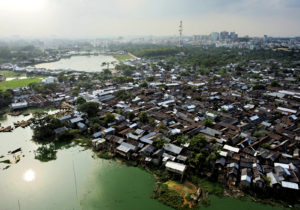New atlas maps environmental migration
A new publication, the ‘Atlas of Environmental Migration’, brings together for the first time, existing knowledge, research and country-level case studies exploring the links between migration, environment and climate change.
Produced by International Organisation for Migration (IOM) and the Paris Institute of Political Studies, the atlas addresses key issues such as the state of research, the complexity of the links between migration and environmental change, key environmental drivers of migration, including climate change, and associated mobility trends.
It was compiled with the help of numerous experts from the academic and institutional sectors from around the world and focuses on key challenges and opportunities for the affected populations and for policy making, existing governance mechanisms and gaps.
It also outlines good policy practices to address environmental migration, as well as a number of cross-cutting topics including gender, health, and human rights.
IOM Director General William Lacy Swing said the atlas was the reflection of a commitment to contribute to raising awareness of the importance of the impacts of climate change on human mobility.
“It will also to encouraging organized and effective responses to the challenges posed by this kind of migration,” Mr Lacy Swing said.
 “The Atlas of Environmental Migration will help us collectively to look differently at the situation of those who have no other choice but to leave the land where they were born,” he said.
“The Atlas of Environmental Migration will help us collectively to look differently at the situation of those who have no other choice but to leave the land where they were born,” he said.
The publication, initially published in French is being launched at a time when migration and environmental change have become two of the most pressing concerns across the globe.
And English version is due to be released in June.
Mr Lacy Swing said it was essential that decision makers and the wider public have an improved understanding of the links between these phenomena and of ways to address them.
The atlas contains more than 100 maps, diagrams and infographics and presents research on environmental migration in a visual and highly accessible way.
It is intended to become a helpful reference tool for policy makers and executives, researchers and practitioners, higher education institutions and students, and anyone seeking to better understand the issues at stake.
Its authors include Dina Ionesco, Head of Migration, Environment and Climate Change Division at IOM, Daria Mokhnacheva, Migration, Environment and Climate Change Specialist at IOM and François Gemenne, Executive Director of the Politics of the Earth Programme at Sciences.
For more information, go to: www.pressesdesciencespo.fr
Ruby Brown
AMES Australia Staff Writer













